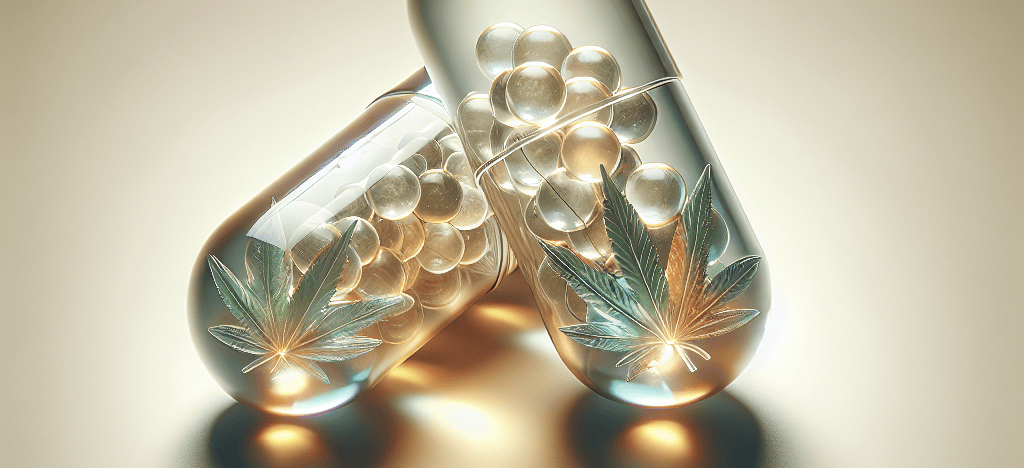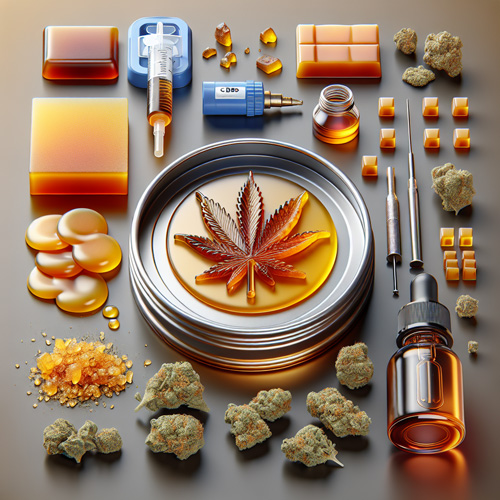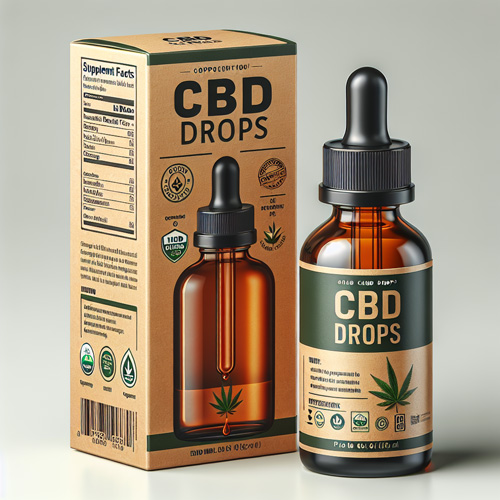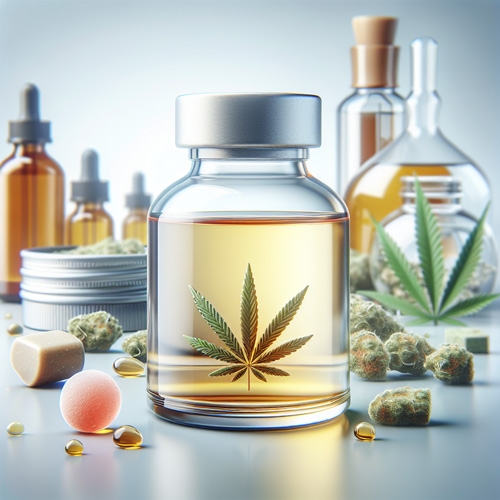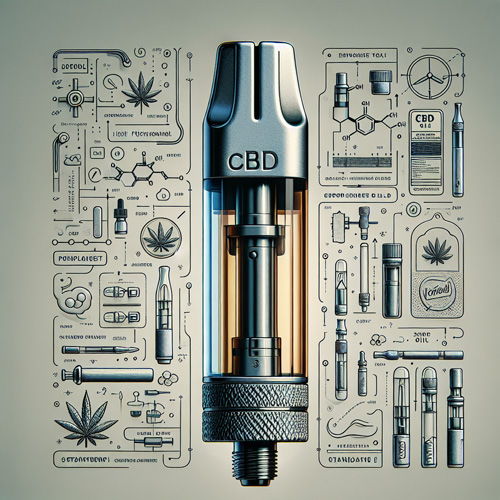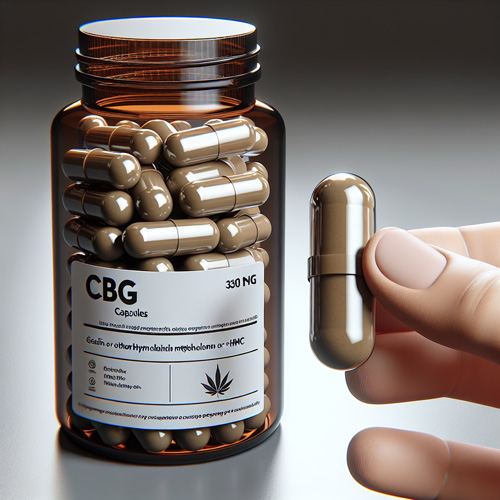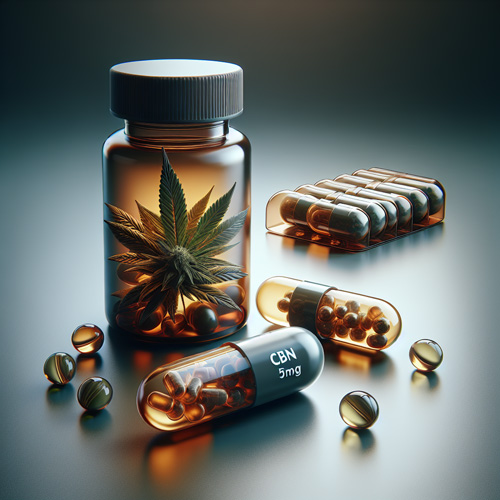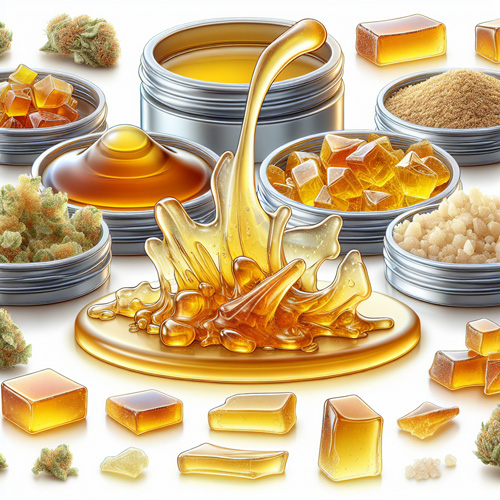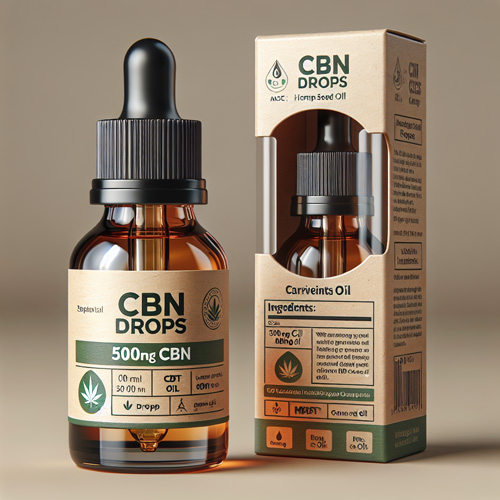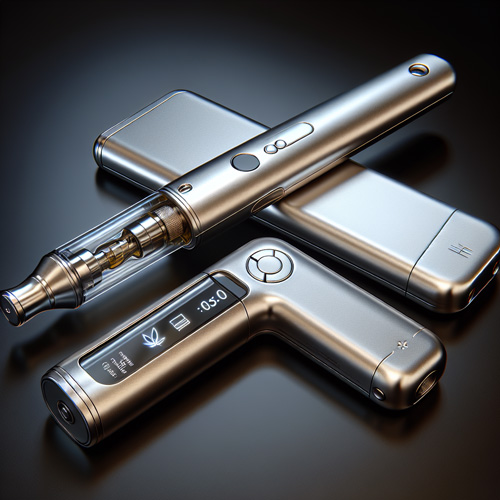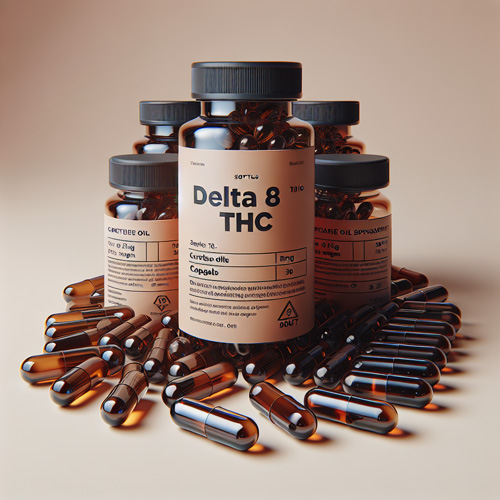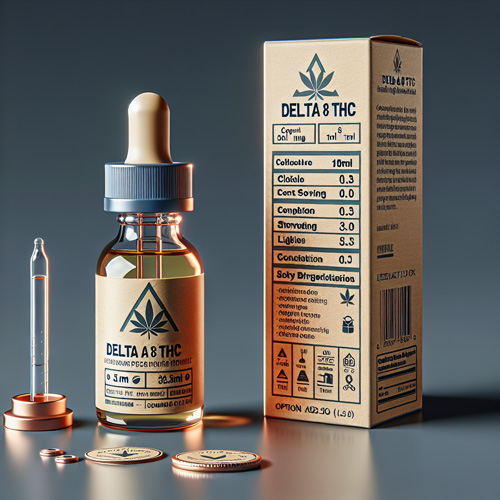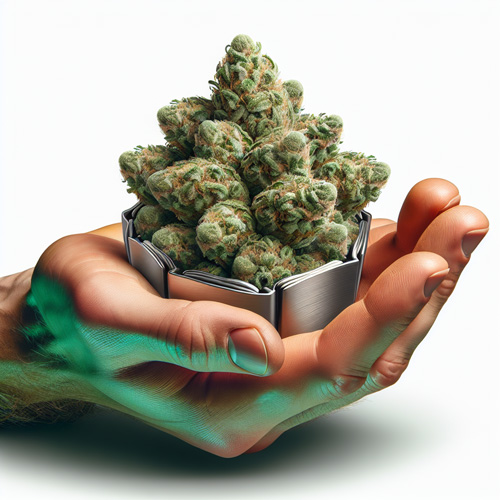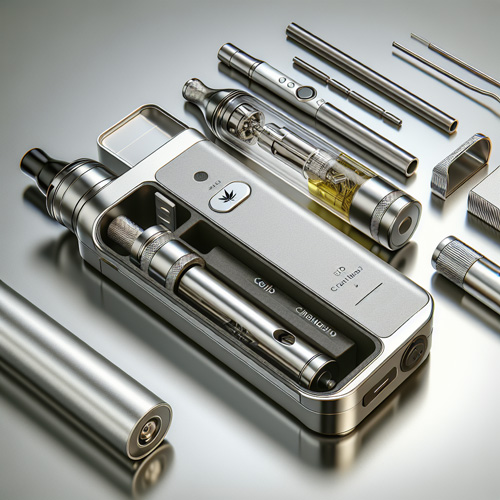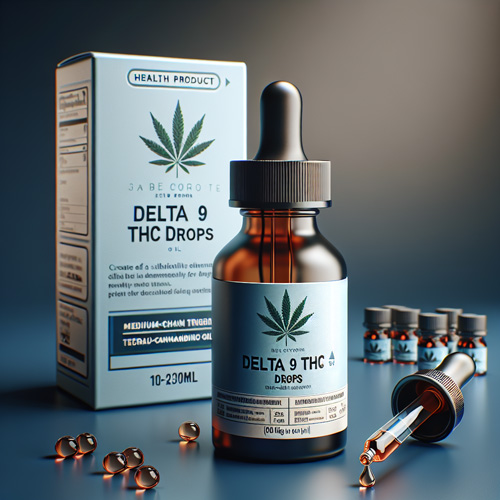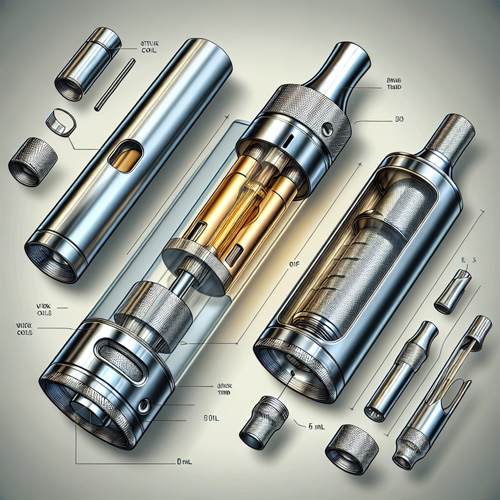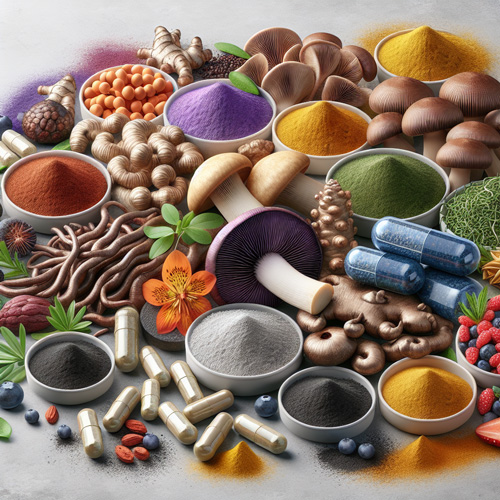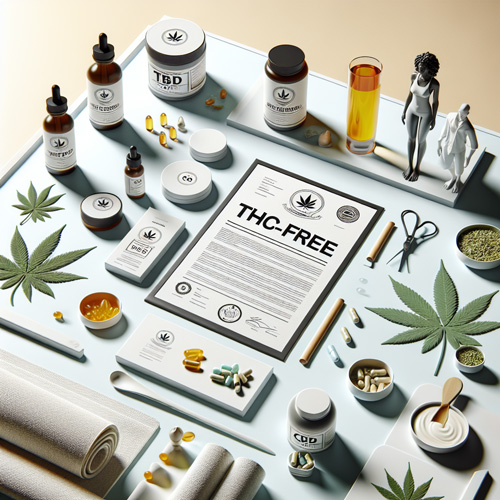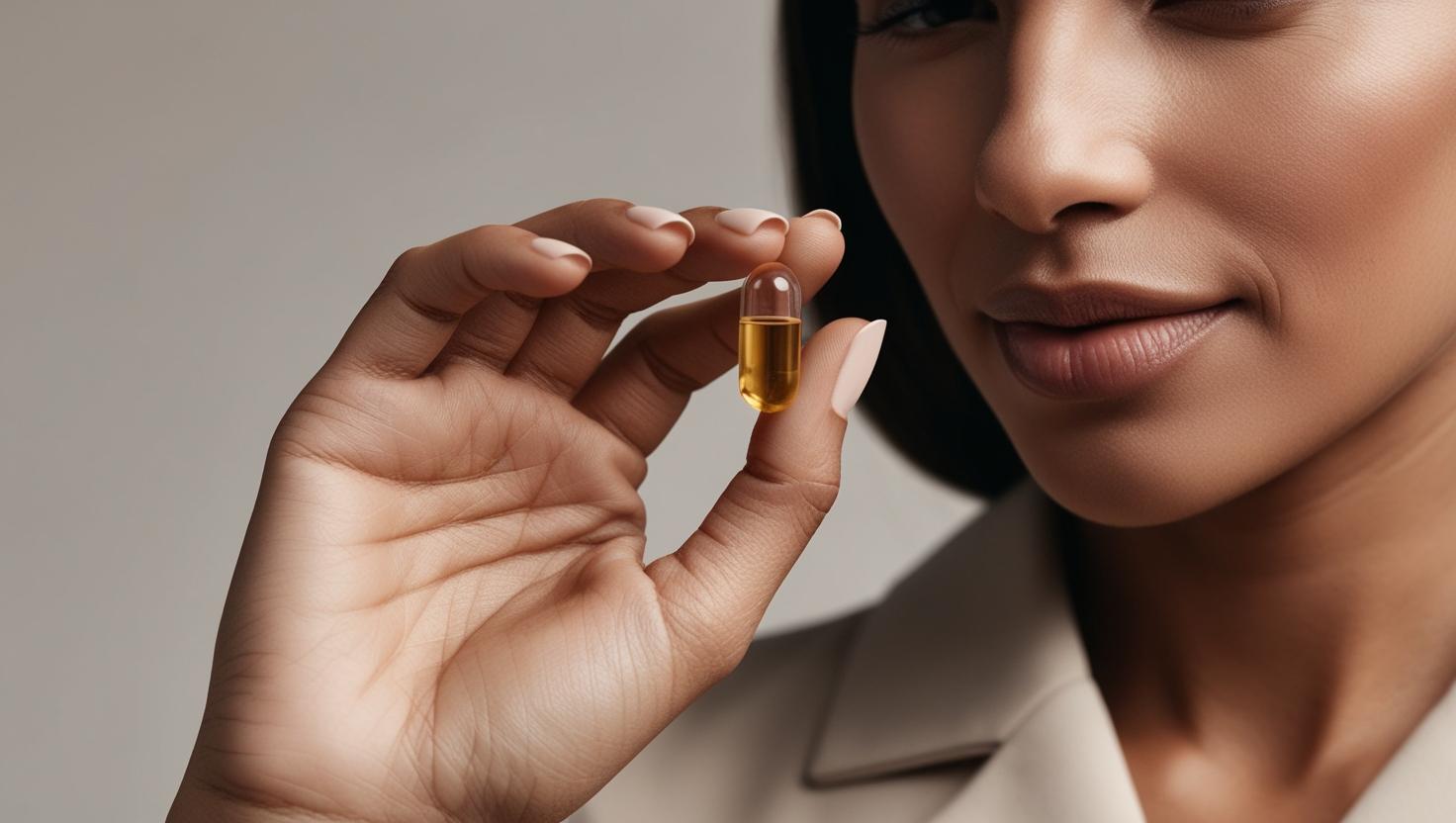
Understanding CBD Dosage: How to Determine the Right Amount for You
In today’s wellness landscape, CBD products have rapidly emerged as a favored natural remedy, promising relief from a spectrum of ailments. As this compound gains popularity, understanding the proper dosage becomes crucial for maximizing its benefits while minimizing risks. Without a standardized dosage for every individual, navigating the complexities of CBD dosing can be daunting.
CBD dosage is influenced by a myriad of factors including body weight, individual tolerance levels, and desired effects. With products available in various forms such as extracts, edibles, capsules, drops, and topicals, determining the right amount can differ significantly based on these variables. Adding to the challenge is the importance of ensuring product quality and consulting healthcare professionals to avoid potential medication interactions.
This article dives deep into the essentials of CBD dosage. From starting guidelines and factors that impact dosing to consulting with healthcare providers and ensuring product quality, we will provide you with a comprehensive understanding needed to determine your ideal CBD dosage safely and effectively.
Key Takeaways
- Determining the right CBD dosage depends on various factors, including body weight, individual body chemistry, and the specific condition being treated.
- CBD is derived from hemp plants and offers a wide range of therapeutic benefits without the psychoactive effects associated with cannabis plants.
- Health benefits of CBD can include pain relief for chronic pain and management of other medical conditions, but the ideal dosage can vary.
- Common delivery methods include oils, capsules, edibles, and topical applications.
- Starting with standard doses and adjusting over time can help find the optimal dose for individual needs.
- It is crucial to be aware of potential side effects and adjust the daily dose accordingly to avoid larger doses that may cause unwanted side effects.
- Chronic usage might require adjusting dosage over time to maintain effectiveness without reaching the maximum or a larger dose that may not be necessary.
- Broad spectrum and hemp-derived CBD products avoid most negative side effects, providing potential benefits without adverse effects.
- Time of day and consistency can affect the effectiveness of the CBD dosage, with noticeable therapeutic benefits often requiring regular intake.
Factors Influencing CBD Dosage
Finding the right CBD dosage can be quite a personalized journey because it involves numerous factors that vary from person to person. It’s not a one-size-fits-all situation, and personal circumstances such as the severity of the condition being treated, body weight, individual body chemistry, and lifestyle can all significantly influence the required dose. Additionally, the type of CBD product and delivery method also play an integral role. Whether you’re using CBD for sleep aid, pain management, or other therapeutic benefits, understanding these factors can help tailor an ideal dosage that meets your individual needs while minimizing potential side effects.
Body Weight
Body weight is a crucial factor in determining the appropriate CBD dosage. Generally, heavier individuals may require higher doses due to the slower absorption rate of CBD across a larger body mass. This slower and lower absorption could mean that a more potent dose might be necessary to achieve the desired therapeutic effects. Dosage calculations are often presented based on the individual’s weight in pounds, offering guidelines for low, medium, and high strength doses. However, while weight is important, it should be considered alongside other factors such as metabolism and individual body chemistry to accurately tailor the dosage for effectiveness and safety.
Individual Tolerance Levels
Individual tolerance levels to CBD can vary greatly and are a critical aspect when determining dosage. Tolerance refers to the body’s decreasing response to a specific dose due to regular use over time. New users typically find that lower doses are effective because they have not yet developed a tolerance. As tolerance builds, individuals may find they need a higher dose to achieve the same effects. Factors like body weight, metabolism, and frequency of use also influence tolerance levels. Although CBD is non-toxic and not physically addictive, increasing doses due to higher tolerance levels can elevate the risk of adverse effects.
Desired Effects
The desired effects of CBD are often highly individualized, requiring adjustments in dosage to achieve optimal results. Many users begin by documenting their dosage and the effects experienced, gradually adjusting the amount taken until they attain their desired benefits. The method of consumption—whether oil, capsule, or topical—also plays a significant role in how effective and how long the effects last. Typically, CBD effects can persist from 2 to 6 hours, but this varies depending on factors like individual tolerance and the specific dosage. Achieving the desired effects involves careful calibration of dose and method, factoring in personal body chemistry and the condition being treated.
Forms of CBD and Their Impact on Dosage
Understanding how different forms of CBD interact with the body is essential for determining the appropriate dosage. The effectiveness of CBD varies significantly depending on the delivery method, as factors such as absorption rates, onset times, and duration of effects differ across each form. For example, oral consumption often showcases a delayed onset, while topical applications may provide quicker localized relief. Therefore, considering the method of administration is crucial for achieving the desired balance between therapeutic benefits and potential side effects. This section will explore the various CBD forms—extracts, edibles, capsules, drops, and topicals—and their unique impacts on optimal dosage strategies.
Extracts
CBD extracts are the concentrated forms of cannabidiol obtained through various extraction methods, each impacting the quality and safety of the product. Solvent extraction, although controversial, uses chemicals like ethanol, acetonitrile, and hexane, which could leave residues. As an alternative, lipid extraction employs oils such as coconut or olive oil, absorbing CBD into fats through heat and pressure. Full-spectrum extracts comprise additional cannabinoids and terpenes, potentially enhancing the therapeutic benefits through the “entourage effect.” In contrast, CBD isolates lack these additional compounds, necessitating higher or more precise doses to achieve similar effects. Understanding the extraction process is pivotal for choosing a reliable CBD product.
Edibles
CBD edibles, like gummies and candies, provide a convenient and flavorful way of consuming cannabidiol. However, they typically have a bioavailability of 10-20%, meaning a significant amount of CBD is lost during digestion. Their effects generally begin 30 to 90 minutes post-consumption, lasting between 4 to 7 hours, depending on an individual’s body chemistry and the dosage taken. While edibles made with isolates avoid THC, full-spectrum versions may deliver enhanced benefits through the entourage effect. Due to their limited absorption rate, CBD edibles often necessitate larger doses compared to oils or vapes to achieve the desired effect.
Capsules
CBD capsules offer discreet and straightforward consumption, with each unit providing a fixed dose of CBD. However, like edibles, capsules possess a bioavailability of 10-20% due to their breakdown in the digestive system. The effects typically take 45 minutes to an hour to commence. Although instructions, dosing per serving, and storage guidance are included on the packaging, the digestive process doesn’t allow for minor dosage adjustments without obtaining new capsules. Capsules are ideal for those desiring a no-fuss, consistent dosing method, albeit with potentially lower absorption compared to other forms like oils or vapes.
Drops
CBD oil drops offer precision and flexibility in dosing, allowing users to measure their ideal amount accurately. Each drop in a CBD oil bottle can be calculated by dividing the total milligrams of CBD by the number of drops, offering a tailored dosage solution. For instance, a 30-milliliter bottle with 3,000 mg of CBD contains approximately 5 mg per drop. If aiming for a 20 mg dose, four drops would suffice. Understanding the concentration and total CBD content in the bottle is essential for accurate dosing, especially when specific guidance relies on drop count.
Topicals
CBD topicals, including creams and salves, are specially formulated products applied directly to the skin for targeting localized issues. Unlike ingestion forms that enter the bloodstream, topicals interact with local receptors, resulting in low to zero bioavailability but making them effective for addressing specific pain areas. The effects can often be felt within minutes when thoroughly massaged into the skin. Side effects are rare with topicals, making them a popular choice for those seeking localized pain relief without the systemic effects associated with other CBD forms. The potency and dosage of topicals vary, requiring consideration of the desired application effects for optimal treatment.
Starting with CBD: A Guide for Beginners
Embarking on the journey of using CBD can be both exciting and daunting, especially for beginners who may not know where to start. CBD, a compound derived from cannabis plants, is celebrated for its wide range of potential benefits, from alleviating chronic pain to promoting overall health and wellness. However, determining the right dosage can significantly impact the effectiveness and safety of CBD use. Factors such as individual body chemistry, body weight, and even the method of delivery, such as oils or capsules, play essential roles in establishing the ideal dosage. For those new to CBD, starting with a lower dose and gradually increasing it is a commonly recommended strategy to safely explore the benefits while minimizing any unwanted side effects.
Importance of Starting Low and Going Slow
The mantra “start low and go slow” has long been a guiding principle within the CBD community, particularly for newcomers. Starting with an initial dose of 10 mg and increasing by 5 mg increments every 2 to 3 days allows users to gauge their body’s reaction to CBD while aiming for the peak of their dose response curve. This careful approach is vital in avoiding the misconception that larger doses automatically yield better outcomes, which can lead to negative side effects. Given the variety of factors influencing CBD absorption and efficacy, such as individual metabolism and the specific medical conditions being addressed, a cautious approach helps users find their optimal dose. Through gradual titration, individuals can also personalize their intake in the absence of strict dosing guidelines, ensuring that their use of CBD aligns with personal health goals and responses.
Gradual Increase in Dosage
Slowly increasing CBD dosage over time is a prudent strategy, especially for those needing to build tolerance or address significant health concerns. Starting with a small dose—such as 0.25 milliliters when using high-concentration tinctures—and gradually increasing it, accommodates the body’s adaptation process. This approach is foundational in personalized cannabis therapeutics, ensuring that individuals reach an effective dose while managing THC’s intoxicating properties when necessary. The start low and go slow method also accounts for diverse personal factors and desired effects, facilitating experimentation with minimal adverse effects. Patience and careful monitoring during this period help identify the right balance and maximize CBD’s therapeutic benefits safely and effectively over time.
Monitoring Effects and Adjusting Accordingly
Monitoring how your body responds to CBD is a crucial step in determining an optimal dosage. Starting with a low dose and gradually increasing it allows individuals to observe any potential benefits or side effects, such as drowsiness or gastrointestinal discomfort, which may require dosage adjustments. Incrementally increasing the dosage—by roughly 5 mg every two days—helps gauge efficacy and comfort levels, making it easier to zero in on the most suitable dose over time. Keeping a consistent dosage once the right effects are achieved can help stabilize potential benefits, promoting long-term health improvements. This careful assessment and adjustment ensure personalized CBD use aligns with individual needs, maximizing therapeutic outcomes while reducing the risk of adverse effects.
Consulting Healthcare Providers
Consulting a healthcare provider is a crucial step before initiating a CBD regimen, especially for individuals with existing medical conditions or those already on prescription medications. This guidance is invaluable due to the complexities in determining the right CBD dosage, which can vary greatly among individuals. Several personal factors, like body weight and individual body chemistry, as well as the specific medical conditions being treated, can influence how CBD interacts with the body. Since CBD products, particularly those that are hemp-derived, often lack standardized dosing information outside of FDA-approved medications, healthcare providers can provide critical personalized advice to help users achieve the desired therapeutic benefits while minimizing potential side effects.
Importance of Professional Guidance
Professional guidance is key to utilizing CBD safely and effectively. A knowledgeable healthcare professional will consider individual medical factors that affect CBD dosing, ensuring the user experiences the potential benefits without unwanted side effects. Consulting with a physician who understands your treatment history is particularly important, as they can help recommend an appropriate CBD dosage tailored to personal health needs. Given the largely unregulated nature of many CBD products, the insight a healthcare provider offers can be invaluable. They can help you navigate discrepancies in product content and strength and ensure your CBD use aligns with your unique health requirements. Thus, discussing CBD use with a healthcare professional not only promotes safety but also encourages more effective integration into your health regimen.
Addressing Potential Medication Interactions
CBD’s interaction with certain medications is a critical consideration and should be approached with diligence. The compound can affect the metabolism of some medications, potentially altering their effectiveness or increasing side effects. Particularly, CBD should not be taken alongside antidepressants, stimulants, or blood thinners, as its combination could enhance side effects or decrease medication efficacy. If you’re on diabetes medications or supplements like kava or melatonin, exercise caution with CBD products. A useful guideline is avoiding CBD with medications labeled as incompatible with grapefruit juice, since both may interact with similar pathways. Consulting a healthcare provider before combining CBD with any prescription medications is advisable to steer clear of adverse interactions. This approach helps in assessing the suitability of CBD and ensuring a safe balance with your current medication regimen.
Assessing CBD Product Quality and Potency
Understanding the quality and potency of CBD products is crucial for users seeking to maximize health benefits such as pain relief or managing chronic pain. CBD, a compound derived from cannabis and hemp plants, interacts with individual body chemistry in various ways, depending on factors like body weight and medical conditions. Disparities in strength and potential undetected THC content can affect the effectiveness of a product, making it essential to purchase from reputable, licensed dispensaries. Higher concentrations of CBD in formulations such as topicals can improve their efficacy, delivering more active ingredients through the skin. The bioavailability of CBD is also a critical factor; it varies across delivery methods, with capsules generally offering lower bioavailability compared to vapes, which can provide a mid to high range. Starting with lower doses and gradually adjusting helps in finding the optimal dose for better therapeutic benefits while minimizing unwanted side effects.
Understanding Product Labels
CBD product labels are an essential tool for consumers to understand what they are purchasing. These labels typically indicate the total milligrams of CBD per serving or the entire bottle, along with usage instructions. For products like CBD capsules and gummies, serving sizes and amounts of CBD per serving are clearly outlined to help users adhere to recommended dosages. Checking the Certificate of Analysis (COA) is crucial when evaluating CBD products. The COA confirms third-party lab testing results, showing cannabinoid potency, and checking for heavy metals and pesticide residues. Mislabeling is a significant concern in the CBD market, so discrepancies between product labels and COA findings should raise red flags. While the FDA has not approved most nonprescription CBD products, following recommended dosage guidelines, as seen with the cannabis-derived medication Epidiolex for seizures, is vital for safe and effective use.
Identifying High-Quality Brands
Finding a high-quality CBD brand is paramount since the market lacks stringent regulation. Thorough research of each brand’s practices can reveal their commitment to safety and accuracy. Look for reputable brands that engage in third-party testing to ensure their products meet quality standards and are free from harmful additives. Avoid companies with a history of inaccurate labeling to mitigate the risk of encountering dangerous or counterfeit CBD products. Products providing no manufacturer or ingredient information may contain synthetic substances posing health risks. For example, in 2018, a CDC report highlighted adverse reactions in users of CBD products with undisclosed or synthetic additives, emphasizing the importance of transparency and quality in manufacturing practices.
Evaluating Potency Levels
The potency of CBD needed for effective treatment varies widely among individuals, influenced by factors like body weight, unique body chemistry, and the severity of the medical condition being addressed. Initial CBD doses often start at a mere 25 milligrams per day but can increase to as much as 1,500 milligrams daily, depending on an individual’s tolerance and specific needs. The form in which CBD is ingested, such as tinctures or oils, also affects its potency and accuracy of dosage, crucial for achieving the desired therapeutic effects without adverse effects. Despite the high potency levels, studies show that CBD is typically well-tolerated with a low toxicity profile. However, certain guidelines like the UK’s FSA recommendation—capped at 70 milligrams per day for healthy adults—underscore the necessity of a tailored approach to determine the optimal dosage for each user. Understanding potency levels helps individuals optimize therapeutic benefits while minimizing unwanted side effects.
Awareness of Potential Side Effects
CBD, derived from the cannabis plant, is increasingly popular for its potential benefits, such as pain relief and therapeutic benefits for chronic pain and other medical conditions. However, while it does not produce psychoactive effects, taking CBD can still lead to a variety of side effects. Understanding these side effects is crucial for anyone considering CBD as a treatment option. By being informed, users can avoid potential negative experiences and use CBD safely and effectively.
Common Side Effects
Taking CBD can result in several common side effects. Users frequently report experiencing dry mouth and fatigue, with drowsiness being one of the more prevalent reactions. Some individuals notice changes in appetite, which can lead to either a decrease or increase, depending on individual body chemistry. Occasionally, digestive issues like diarrhea may arise, but these are less common. It is important to recognize that these side effects generally occur when people take larger doses or exceed the body’s ideal dosage threshold.
Furthermore, CBD can occasionally cause more atypical side effects. Lightheadedness and low blood pressure may occur in some users, particularly if the overall body weight and individual health conditions aren’t considered when determining dosage. Although rare, some people may also experience a quicker heart rate or gastrointestinal discomfort, such as nausea and vomiting. These side effects, though less common, highlight the importance of beginning with a lower daily dose and gradually working up to find an optimal dose that minimizes unwanted effects.
Managing and Minimizing Risks
To minimize the risks associated with CBD, careful attention to dosage is essential. Taking excessive amounts can lead to mild side effects, which can be avoided by incrementally adjusting the dosage over time. For those who find their body adapting and requiring larger doses for the same effects, a tolerance break of 7-14 days can be beneficial to reset the body’s response to CBD.
Consulting with a healthcare professional is highly advisable, especially for individuals on other medications, as CBD can interact with certain prescriptions and alter their effectiveness, potentially leading to adverse effects such as liver damage. Recognizing the variety of factors like metabolism, body weight, and specific health conditions can help determine a personalized dosage guideline.
In addition, selecting high-quality CBD products is crucial, given concerns about the presence of low-quality or counterfeit products due to the lack of FDA regulation. By choosing premium and hemp-derived CBD products, users can better secure the potential health benefits while minimizing the risk of unwanted side effects. By understanding these precautions, one can more safely integrate CBD into their wellness routine.
Importance of Consistency in CBD Use
CBD, derived from hemp plants, is widely recognized for its potential benefits, aiding in everything from chronic pain relief to managing various medical conditions. However, one of the critical aspects often overlooked is the consistency in its usage. For individuals seeking optimal therapeutic benefits from CBD, maintaining a stable and regular intake is essential. Without a consistent routine, the therapeutic benefits of CBD might be diminished, as irregular usage can lead to a fluctuating supply of the active compounds in the bloodstream, impacting its effectiveness. Additionally, abrupt discontinuation can result in the reemergence of previously managed symptoms, underlining the importance of a consistent dosage routine.
Developing a Routine
Developing a well-structured routine for CBD intake can be as crucial as choosing the right product. The cornerstone of an effective CBD regimen is identifying a specific time of day for ingestion. Observing how your body chemistry responds at these times can provide crucial insights into optimizing benefits. Ensuring that CBD is taken consistently and in controlled doses is vital to maximizing its therapeutic effects and supporting overall health goals.
Consider starting your day with a morning dose to help manage stress or provide pain relief throughout the day. Additional doses in the afternoon or evening can support continued benefits. Monitoring the precise amounts taken and any noticeable changes in symptoms helps fine-tune your CBD routine. Consistency in both timing and dosage is paramount; skipping days or varying the doses could potentially hinder the positive effects CBD offers.
Long-term Benefits of Consistent Use
Regular and consistent use of CBD can amplify its health benefits over the long term. While initial doses might produce modest relief, persevering with consistent consumption can lead to enhanced effects over time. This gradual improvement contrasts with THC, as CBD does not appear to lead to tolerance buildup in users, meaning the required dosage to achieve the same effects does not typically increase over time.
As you continue your CBD regimen, even if the starting dose provided only slight benefits, with regular use, you might find its effectiveness naturally expands. The beauty of CBD is that regular users can usually maintain the same dosage without needing adjustments, unless there’s a notable change in body weight or a shift in health conditions. This stable requirement means consumers can enjoy uninterrupted benefits without the need for increasingly larger doses. Staying committed to a consistent regimen ensures that the small gains eventually develop into significant health benefits, demonstrating the true value of regular CBD use.
